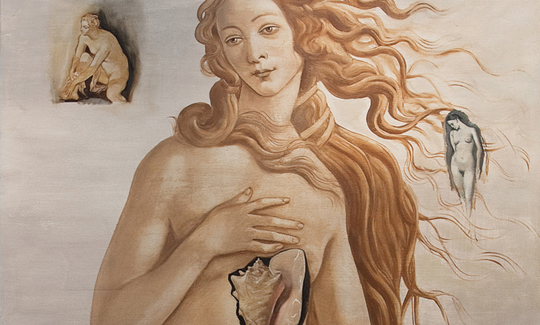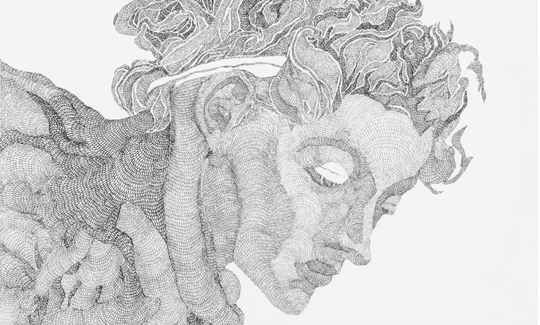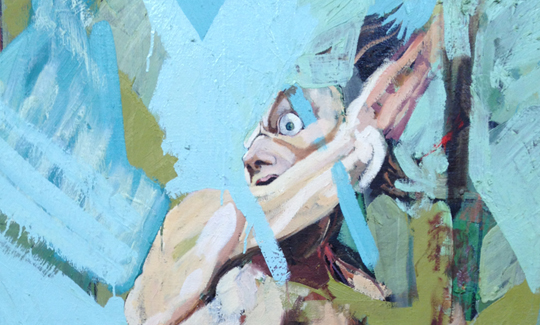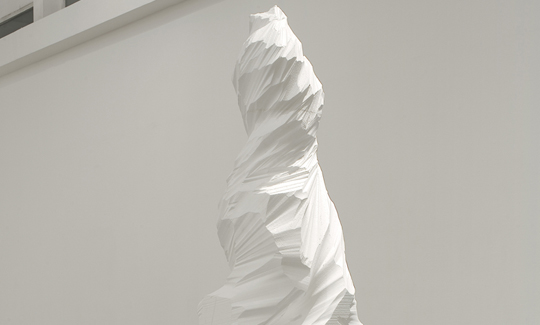The Yearning for Myth
Saturday, 23.07.16, 20:00
Saturday, 21.01.17
Curator:
Limor Alpern
More info:
04-6030800The Yearning for Myth
This exhibition addresses mythological themes that appear in the work of many contemporary Israeli artists. Myth is one of the basic instruments through which art understands and expresses itself. The mythical discourse depoliticizes reality by suppressing the historical dimension, rendering the world of phenomena "eternal" and "universal."
The exhibition explores Israeli art's yearning for a dialogue with the images of the classical Greek myth and their place in Western art. This preoccupation is examined by presenting a number of works from the 1970s, alongside contemporary works. All contain quotes from masterpieces, affording a contemporary view of ancient iconography. They reflect the complex relationship between the rich tradition of Western art and the "Want of Matter" period in Israeli art, in which, between the 1960s and the 1980s, artists would often use industrial materials and an ascetic visual idiom. The works in the show shift between a sense of longing for a perfect, structured world, and a world that is characterized by fragmentation and defeat. In contrast to postmodernism, which rejected the major narratives, artists of the post-postmodern era reveal, through myth, the basic structural nature of the world, in their attempt to express the human condition and its values, its desires, and its deepest fears.
A prominent example of the ironic postmodern engagement with Greek myth in Western art appears in the works of the "10+" group, including Reuven Resnik, Ziva Ron, Henry Shelesnyak, and others, who mounted, in 1970, an exhibition in homage to Botticelli's Venus. These artists sought to shatter the Goddess of Beauty's iconic image by painting it in Pop colors, tearing it to pieces, and pulling Venus down to the level of the prosaic and the everyday. The exhibition was meant to emphasize Israeli art's rejection of the glorious Western tradition and the supremacy of the "Want of Matter" conception.
Contemporary Israeli artists who turn to Western art that is engaged with Greek myth offer a new look at human values, at morality and hope, as vital needs of the present age. Lea Avital creates a sculpture out of Styrofoam, a cheap, lightweight material opposed to the noble marble of classic Greek sculpture. Joshua Borkovsky invite the viewer of his works to pause and concentrate his gaze, doubting the veracity of sight. Yael Balaban reconstructs what seem like remnants of the classical world and its sanctity, like a sculpture whose crushed remains begin to sprout signs of life. Aram Gershuni paints a Hellenist marble statue alongside a tiny tangerine, as a possible combination of the past with everyday reality. Jonathan Hirschfeld seeks to revive humanity's humanism and enlightenment, choosing the figure of Prometheus who brought fire to man. Mira Maylor's sculpture recalls the story of Icarus, whose waxen wings melted; her wings of glass indicate both the power of life and the fragility of existence. Osvaldo Romberg sees himself as a redeemer of mythological masterpieces, seeking to develop a dialogue with their creators and original contexts. Elie Shamir depicts himself as Pygmalion, who fell in love with his own perfect creation, seeking to share with the viewer a unique experience in which beauty, pleasure, and pain coincide.
Whereas the "10+" group ridiculed the iconic figure of Venus, contemporary artists' choice of the mythic narrative presents a view of our complex reality in moral terms. Their works span a spectrum of past and present, moving between ideas, moods, and positions, yet also raising expectations for the future. Their art becomes a brick, in the attempt to build the next layer of culture.
Curator: Limor Alpern Zered




